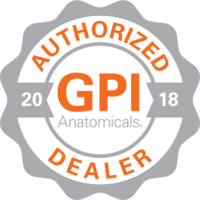Classic III
Using and maintaining a new stethoscope can sometimes feel like a challenge, especially if your new stethoscope is quite different from the stethoscope you previously owned. Medical professionals who purchase a 3M Littmann Classic III Stethoscope can count on the comprehensive guide below. In this guide, you will find more information about the operation of the 3M Littmann Classic II Stethoscope, but also about its maintenance. So, be sure to read on if you want to get the most out of your 3M Littmann Classic III Stethoscope.
This category is empty! Please try another category or use our search function to find what you are looking for. If you require further assistance please contact us.
How Do I Align the Headset of the 3M Littmann Classic III Stethoscope?
One of the first things to do before you use your 3M Littmann Classic III Stethoscope is aligning the headset. Aligning the headset ensures optimal acoustics, but it also ensures the headset is comfortable to wear.
Take the headset and use it for the first time. When the headset feels uncomfortable, or if you believe the acoustic performance is not up to scratch, you can adjust the tension of the headset to correct this problem.
All 3M Littmann Classic III Stethoscopes come with an adjustable headset. To increase the tension on the headset, squeeze the ear tubes together; this will make the headset a little smaller. If you want to make the headset bigger, pull apart the ear tubes until the desired reduced tension is reached.
To ensure you get the most out of the headset of the 3M Littmann Classic III Stethoscope, it is also essential to wear the headset properly. The ear tips of the headset must be facing forward before they are inserted in the ear canals. Improper positioning of the ear tips could lead to poor acoustic performance, but also sound blockages. Therefore, the position of the ear tips is vital for good operation.
The size of the ear tips is also important when you consider the proper fit of your headset. Ear tips for the 3M Littmann Classic III Stethoscope are available in small and large, which provides clinicians with a set of ear tips that fits them.
How Do I Use the Diaphragm and Open Bell Properly?
Since the 3M Littmann Classic III Stethoscope contains a double-sided chestpiece, there are some things to consider when you use your new stethoscope for the first time.
When you start using the 3M Littmann Classic III Stethoscope, you must open the side you want to use, more specifically the bell or the diaphragm. To open the side you will be using, simply rotate the chestpiece. When you open the diaphragm, then the bell will be closed off; this prevents sound coming through the wrong side of the chestpiece.
How Often Should I Clean the Chestpiece of the 3M Littmann Classic III Stethoscope?
The chestpiece of your 3M Littmann Classic III Stethoscope should be cleaned regularly, since improper maintenance could cause dirt and debris to accumulate on the chestpiece. Not only is this less than ideal for hygiene reasons, the build-up could also obstruct the sound pathway and make diagnosis impossible. Therefore, ensure you make the maintenance of your 3M Littmann Classic III Stethoscope a routine.
How Do I Make Sure Sound Transmission Is Optimal After the Maintenance of My Stethoscope?
To ensure your stethoscope has the same impeccable acoustics as the day you bought it, make sure to check the airtight seal after maintenance. If the seal is not placed on the chestpiece properly, sound transmission could be interrupted.
There are other things medical professionals should check during the regular maintenance of their 3M Littmann Classic III Stethoscope. Always check for any loose parts on the chestpiece, but also for cracked or loose tubing. The ear tips must be properly attached to the headset after maintenance too.
What Products Do I Use to Clean the 3M Littmann Classic III Stethoscope?
As a medical professional, it is important to disinfect your stethoscope regularly. To disinfect your stethoscope, you can use a special wipe containing a 70% isopropyl alcohol solution; this protects the construction of the stethoscope, but also keeps it hygienic enough for daily use.
When maintaining your 3M Littmann Classic III Stethoscope, please make sure never to submerge your stethoscope in a liquid. It is also not recommended to put the stethoscope in a steriliser, since this could damage the construction of the stethoscope too.
To ensure a long lifespan for your stethoscope, make sure to store your stethoscope in a protected environment. The stethoscope should never encounter extreme heat, cold, solvents, and oils, since these could damage the chestpiece or the tubing.
For the maintenance of the tuneable diaphragms and the chestpiece, we suggest removing the diaphragms from the chestpiece before wiping them down with some alcohol or some soapy water. Afterwards, you can reassemble the chestpiece. However, please make sure to dry all the parts of the chestpiece before you reassemble them.
When maintaining the 3M Littmann Classic III Stethoscope, make sure you remove the ear tips regularly too. By removing the ear tips, you can maintain the ear tubes properly and prevent any dirt and debris piling up between the ear tips and the ear tubes.
Please note that the maintenance of the 3M Littmann Classic III Stethoscope is made easier by the presence of next-generation tubing, the material used to construct the tubes of the stethoscope. The material is more resistant to stains and oils, which makes it less likely the tubes will have a build-up of stains after use.
Conclusion
The 3M Littmann Classic III Stethoscope is an exquisite choice for busy medical professionals, since the operation and maintenance of this stethoscope is quick and straightforward.
Before using your 3M Littmann Classic III Stethoscope, we suggest reading the instructions that accompany this new stethoscope. If you should have some additional questions about the operation and maintenance of the 3M Littmann Classic III Stethoscope, feel free to contact the Mentone Educational team for more information, or refer to the Littmann information pages on the website.




















